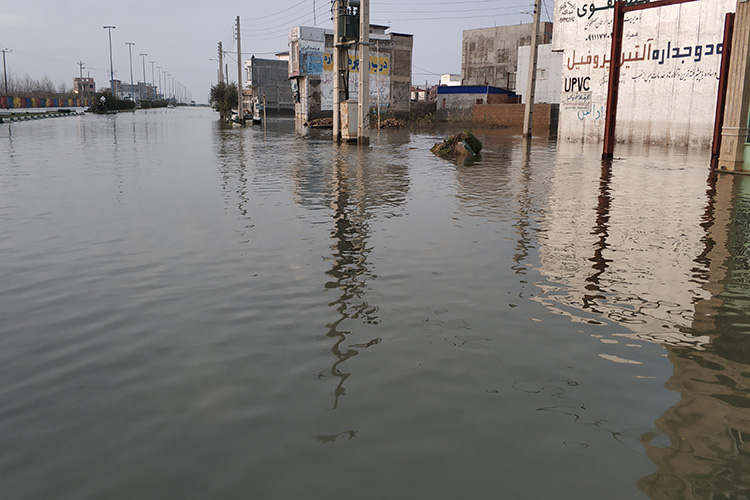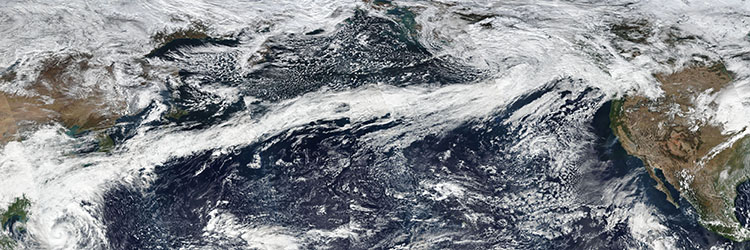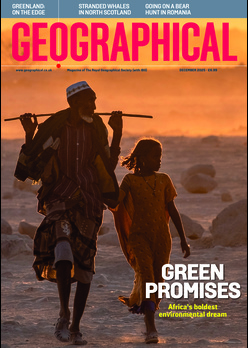
A little-understood phenomenon is responsible for recent deadly rainfall in Iran, scientists say it will become more common in the future
By
In April 2023, a torrent of water flowed into western Iran, causing flash flooding in cities and villages that claimed lives, destroyed homes and left hundreds displaced.
The devastation was caused by an atmospheric river – huge, invisible ribbons of water vapour drawn up from the oceans and carried across thousands of kilometres before they land, often as monsoon-like rain. More specifically, says Diana Francis, it was caused by a stretch of rapids that developed in the atmosphere.
In a river that runs on land, rapids form when the flow of water is restricted by a narrower or shallower river channel. ‘It’s the same with atmospheric rivers,’ says Francis, lead author of a new paper that reveals the role that atmospheric river rapids played in the 2023 floods.
‘Here, however, we’re looking at steep gradients of temperature or pressure – or both – that force much more water vapour to pass through an area than normal.’

Francis is an atmospheric scientist and heads the geoscience lab at Khalifa University in Abu Dhabi. She’s spent more than ten years studying climate and weather phenomena, and how they impact the Middle East, and works with one of just two research teams currently investigating atmospheric river rapids, a phenomenon about which we still know relatively little. ‘Honestly,’ she says, ‘this is really a very, very recent area of research.’
Part of the problem, she explains, stems from the fact that these rapids are small scale structures within much larger atmospheric rivers, and aren’t picked up by the data and models we typically use to forecast weather events.
‘That’s why the floods caused by atmospheric river rapids in Iran in 2023 were not forecasted.’ For now, she says, this kind of flooding will continue to be missed, simply because we don’t have the tools to account for it.
On average, an atmospheric river carries an amount of water vapour equivalent to the flow of water at the mouth of the Mississippi River, but they can carry up to 15 times that amount. The Pineapple Express, an atmospheric river that emerges from the tropical Pacific Ocean, is known to be behind some of California’s heaviest rains and biggest floods. Scientists have been studying the phenomenon for decades – the term ‘atmospheric river’ come to understand their role in recent extreme rain and snowfall events in North America, Australia, Europe and Antarctica, atmospheric rivers have been attracting more attention from scientists and the public.

Much less attention, however, has been paid to atmospheric rivers occurring in the Middle East. Away from large oceans, these phenomena have tended to be less frequent and less powerful. When they do emerge, it has often been over unpopulated areas of desert. That’s now changing, says Francis. ‘Why? Because the circulation over the Atlantic Ocean is changing.
So instead of atmospheric rivers going directly to Europe, they deviate further south over Africa, and then they cross over the Middle East.’ Increasingly, atmospheric rivers are also making landfall over large cities, as we saw in 2023. ‘And, most probably, during the extreme rainfall this year in the UAE,’ she adds, although she is still working to confirm this.
Globally, research shows that the frequency and intensity of atmospheric rivers are going to increase at least 50 per cent in the coming 50 years. While this will vary from one place to another, the main regions that will be impacted are the Polar regions and the Middle East – both dry, desert climates. Francis says that the other team of researchers working on atmospheric rivers rapids are focused on Greenland, where they hope to understand how it they might affect snow melt. More observations are going to be critical to informing the models we use to forecast these kinds of events, while also helping us to understand the impacts from one region to another.
In the meantime, countries in the Middle East are going to have to adapt. ‘They need to plan how they’re going to deal with extreme flooding, looking at drainage systems, roads, and how they can absorb more water within the built environment,’ says Francis. ‘The cities aren’t built for this.’




